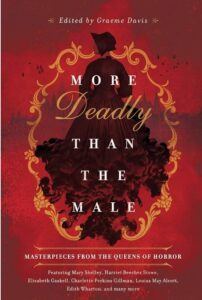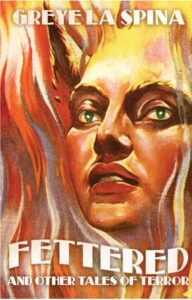
A Darker Shade of Noir: New Stories of Body Horror by Women Writers
Edited by Joyce Carol Oates
Akashic Books, 2023
ISBN: 978-1636141343
Available: Hardcover, paperback, Kindle edition
Buy: Bookshop.org | Amazon.com
A Darker Shade of Noir: New Stories of Body Horror by Women Writers disturbs the imagination and makes horror reality. Writers Megan Abbott, Margaret Atwood, Aimee Bender, Tananarive Due, Elizabeth Hand, Cassandra Khaw, Sheila Kohler, Aimee LaBrie, Raven Leilani, Lisa Lim, Joanna Margaret, Valerie Martin, Joyce Carol Oates, Lisa Tuttle, and Yumi Dineen Shiroma offer many strange, twisted stories that attest to the diversity of approaches to the genre.
Editor Joyce Carol Oates divides these little masterpieces into three sections: “You’ve Created a Monster,” “Morbid Anatomy,” and “Out of Body, Out of Time.” Aimee Bender’s story “Frank Jones” opens the book with the weird creation of a skin tag doll that should not have been taken to the office. Margaret Atwood delves into female anatomy through a snail who suddenly becomes a woman customer service rep in “Metempsychosis, or The Journey of the Soul.” And then we find a new wife, in ““Sydney” by Sheila Kohler, who finds herself in a shocking sexual situation with a gender-bending robot when she ventures into a part of her home that is designated as off limits by her husband.
There are often very surprising developments in these stories. In “Concealed Carry” by Lisa Tuttle, Kelly, fresh from London, finds out that there is a strict moral code in Texas that is enforced in a way she could never imagine. In “Malena” by Joanna Margaret, Laura, who makes sculptures of women with missing body parts, discovers that the artistic “gift inside her” is also literally inside her. In “Dancing with Mirrors” by Lisa Lim, a beautiful woman addicted to mirrors hides spectacularly murderous veins..
In addition to being entertaining, these writers are not afraid to tackle serious issues. “Dancing” by Tananarive Due and “Breathing Exercise” by Raven Leilani grapple with the impact of racism on the mind, body and soul.. Aimee Labrie in “Gross Anatomy”, and Cassandra Khaw in “Muzzle”, deal with physical violence against women. These are stories that head straight to the heart of the matter without becoming entangled in politics and platitudes.
Readers truly benefit from iconic writer Joyce Carol Oates’s expert shaping of this excellent collection of stories. There is not one dull moment in this book, and beginning the next story is like the start of a new and darker adventure.
Reviewed by Nova Hadley






Follow Us!